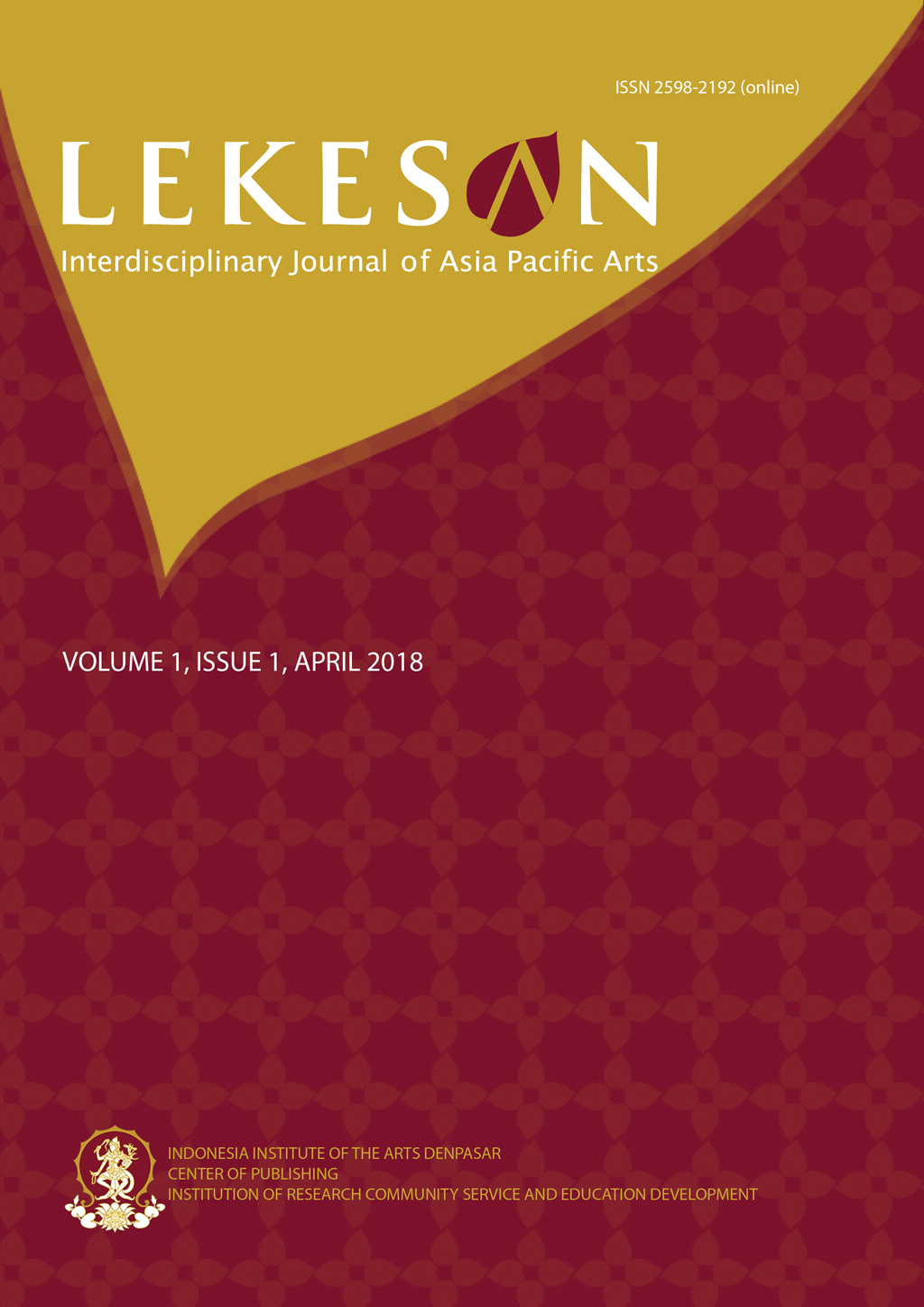Performing Authenticity And Contesting Heritage In The UNESCO-Inscribed Jerusarema/Mbende Dance Of Zimbabwe
DOI:
https://doi.org/10.31091/lekesan.v1i1.340Keywords:
UNESCO, authenticity, heritage management, ethnomusicologyAbstract
In African societies, traditional dances form and shape a multitude of cultural expressions that reflect socio-cultural status, stalwart traditions and degrees of heritage maintenance. Due to colonisation, westernisation and Christianity, the performative aesthetics of many African traditional dances have been drastically modified over time. One such traditional dance in Zimbabwe that has undergone continual socio-cultural and aesthetic change is Jerusarema/Mbende from the Murehwa and Uzumba-Maramba-Pfungwe districts of Mashonaland Eastern province. In 2005, The Mbende Jerusarema Dance of Zimbabwe was proclaimed on the United Nations Educational Scientific and Cultural Organisation (UNESCO) list of Masterpieces of Oral and Intangible Heritage of Humanity. Authentic elements of the dance were compiled by the Zimbabwe National Oral and Intangible Cultural Heritage (ZNOICH) committee in an effort to safeguard it against change. This safeguarding led the Jerusarema/Mbende dance along a contested path of endorsement and utilisation in multiple contexts by some performance ensembles such as Swerengoma, Ngomadzepasi, Zevezeve, Shingirirai and Makarekare as promoted by prominent dance festivals. These ensembles assert different agendas through music, props, instruments and dance movements. Drawing upon documentary video evidence from the National Arts Council of Zimbabwe and interviews, this paper evaluates the extent to which the authentic elements of the Jerusarema/Mbende dance inscribed on the UNESCO list have been safeguarded in formalised performances from 2013 to 2015. Video recordings from this period showing continuous participation of Ngoma Dzepasi, Makarekare and Shingirirai are used to assess similarities and differences from the fixity of authentic elements. We argue that UNESCO’s recognition of the Jerusarema/Mbende dance as intangible cultural heritage has, on the one hand, revived and maintained some characteristics of this dance but, on the other hand, gradually compromised innovative aesthetic music and dance elements introduced by inheriting generations.Downloads
References
Boyle, D. (2004). Authenticity: Brands, fakes, spin and the lust for life. London: Harper Perennial.
Chitakure, J. (2016). The pursuit of sacred: An introduction to religious studies. Eugene: Wipf and Stock publisher.
Chitepo, T. (2011). Report on the implementation of the convention and the status of elements inscribed on the representative list of the intangible cultural heritage of humanity. Ministry of Sports, Arts and Culture. Zimbabwe: UNESCO. Retrieved August 03, 2016
Carter, L. C. (2000). Improvisation in dance. The Journal of Aesthetics and Arts Criticism, 181-190. Retrieved 10 July 2017, from http://www.jstor.org.elibrary.jcu.edu.au/stable/432097
Demissie, F. (2012). Colonial architecture and urbanism in Africa: Intertwined and contested histories. New York: Ashgate publishing limited.
Elia, R and Ostovich, M.E. (20 September 2011). Heritage Management. p. 1. Retrieved 03 August 2016, from http://www.oxfordbibliographies.com/view/document/obo-9780195389661/obo-9780195389661-0119.xml
Foster, S. L. (2009). Worlding Dance. Hampshire: Palgrave Macmillan.
Heynen, H. (2006). Questioning authenticity. National Identities, 287-300.
Hood, M. M. (2014). Voicing the nation, negotiating the tradition: Popular music influences on traditional Balinese vocal style. Mudra: Journal of Art and Culture, 29(3), 342-347.
Hotitorf, C., and Scadla-Hall, T. (1999). Age as artefact: On archaeological authenticity. European Journal of Archaeology, 229-243.
Howard, P. and Ashworth, J. (1999). European Heritage, Planning Management. Oregon: Intellect Books.
Katsamudanga, S. (2003). The dilemma of preserving intangible heritage in Zimbabwe: In proceedings of Place-memory-meaning preserving intangible values in monuments and site: ICOSMOS 14th general assembly and scientist symposium. Victoria Falls, Zimbabwe. University of Zimbabwe
Kramsch, C. (1993). Context and Culture in Teaching. New York: Oxford University Press.
Mataga, J. (2008). Beyond the dance: A look at Mbende (Jerusarema) Traditional Dance in Zimbabwe. International Journal of Intangible Heritage, 03, 95-102. Retrieved August 08, 2016, from www.ijih.org/volumeMgr.ijih?cmd=volumeView&volNo=3#none
Owomoyela, O. (2002). Culture and customs of Zimbabwe. Westport, CT: Greenwood Press.
Radbourne, J., Johanson, K., Glow, H., & White, T. (2009). The audience experience: Measuring quality in the performing arts. International Journal of Arts Management, 11, 16-29. Retrieved 30 June 2017, from http://www.jstor.org.elibrary.jcu.edu.au/stable/41064995
Smith, W. (1870). Dictionary of Greek and Roman antiquities. London: Spottiswoode and CO.
Thram, D. (2002). Therapeutic efficacy of music-making neglected aspects of the human experience integral to performance process. International Council for Traditional Music, 34, 129-138. Retrieved from https://www.researchgate.net/publication/279398645_Therapeutic_Efficacy_of_MusicMaking_Neglected_Aspect_of_Human_Experience_Integral_to_Performance_Process
Timothy, D. J. (2011). Cultural heritage and tourism: An introduction. Bristol: Channel New Publishers.
Turino, T. (2000). Chicago studies in ethnomusicology: Nationalists, cosmopolitan and popular music in Zimbabwe. Chicago: University of Chicago Press.
UNESCO. (17 August 2016). United Nations Educational, Scientific and Cultural Organisation: Intangible Cultural Heritage. Mbende Jerusarema Dance. Retrieved from United Nations Educational, Scientific and Cultural Organisation web site: http://www.unesco.org/culture/ich/en/RL/Mbende-Jerusarema-dance-00169#identification
UNESCO. (27 August, 2016a). The United Nations Educational, Scientific and Cultural Organisation. Safeguarding the Mbende Jerusarema Dance. Retrieved from The United Nations Educational, Scientific and Cultural Organisation: http://www.unesco.org/culture/ich/en/projects/safeguarding-the-Mbende-Jerusarema-dance-00044
Welsh- Asante, K. (2000). Zimbabwe dance: Rhythmic forces, ancestral voices an aesthetic analysis. Trenton: African World Press Inc.
Yang, M. (2015). Cultures in Moving the MDGs to the Post-2015 Development Agenda: Some Reflectors on the Role of Living Heritage for Sustainable Development. In M.- T. Albert, Perceptions of Sustainability in Heritage (p






